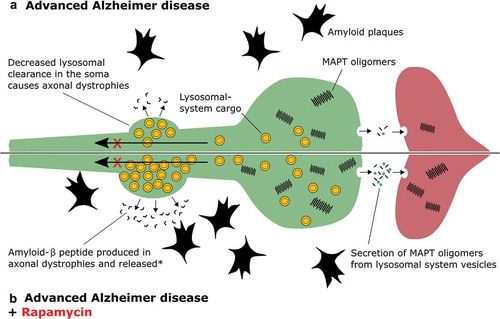Figures & data
Figure 1. Treatment of advanced AD with rapamycin. (A) In Alzheimer disease, lysosomal-system cargo (yellow vesicles) that should be retrogradely transported up an axon (green) to the soma, where lysosomal degradation occurs, accumulate because lysosomal function is critically damaged. (B) Treatment with rapamycin enhances the generation of lysosomal-system cargo, and during AD this will result in further accumulation of lysosomal vesicles. According to the literature this may promote propagation of MAPT aggregates to another neuron (red), and further production of amyloid plaques. *How release of amyloid-β from the dystrophy occurs is poorly understood but could happen by fusion of lysosomal-system cargo with the axon’s plasma membrane, or rupture of this membrane and release of lysosomal-system contents into the parenchyma.

